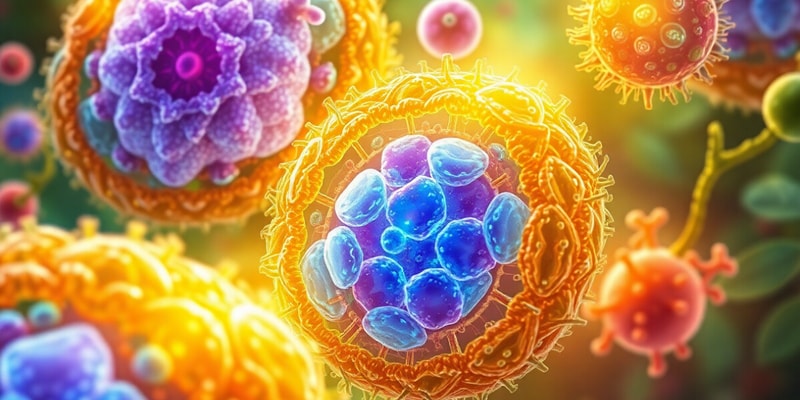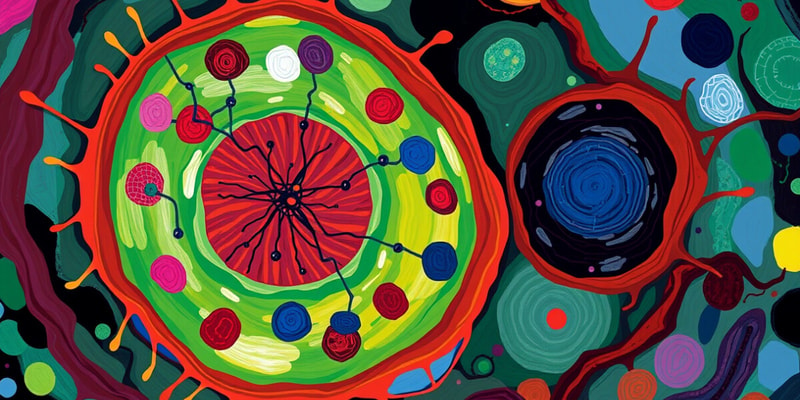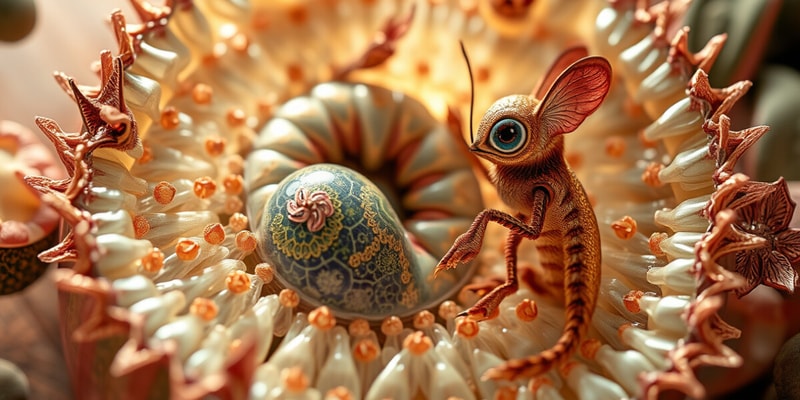Questions and Answers
What is a cell?
The basic unit of life.
What is the difference between eukaryotic and prokaryotic cells?
Eukaryotic cells have a nucleus, while prokaryotic cells do not.
Who discovered the cell?
Robert Hooke.
What did Antonie van Leeuwenhoek discover?
Signup and view all the answers
What did Robert Brown discover?
Signup and view all the answers
What are the postulates of cell theory established by Matthias Schleiden and Theodore Schwann?
Signup and view all the answers
What is the last postulate of cell theory created by Rudolf Virchow?
Signup and view all the answers
What are the different types of cells?
Signup and view all the answers
What are common parts of both animal and plant cells?
Signup and view all the answers
Which of the following are unique parts of plant cells?
Signup and view all the answers
What is the function of the nucleus?
Signup and view all the answers
What does the mitochondrion do?
Signup and view all the answers
What is the primary function of the cell wall?
Signup and view all the answers
What is the role of lysosomes?
Signup and view all the answers
Study Notes
Overview of Cells
- Cells are the fundamental unit of life, comprising all organisms.
- Diverse sizes and shapes are determined by cell functions.
- Two main types of cells: prokaryotic (without a nucleus) and eukaryotic (with a true nucleus).
History of Cell Discovery
- 1660: Robert Hooke examined cork and coined the term "cell."
- 1676: Antonie van Leeuwenhoek improved microscope magnification and discovered bacteria.
- 1831: Robert Brown identified the nucleus within cells.
-
1838-1839: Matthias Schleiden and Theodore Schwann formulated the first two postulates of cell theory:
- All organisms consist of one or more cells.
- The cell is the basic unit of life.
-
1855: Rudolf Virchow added the third postulate:
- All cells arise from preexisting cells.
The Cell Theory
- All organisms are composed of one or more cells.
- The cell is the fundamental unit of life.
- New cells originate from existing cells.
Types of Cells
- Distinction between prokaryotic and eukaryotic cells is crucial in biology.
Common Organelles in Animal and Plant Cells
- Cell membrane: Controls substance entry and exit, acting as a cell's protective barrier.
- Nucleus: Functions as the control center of the cell.
- Nucleolus: Dense area within the nucleus where RNA is synthesized.
- Cytoplasm: A semi-fluid gel-like substance where organelles are suspended.
- Endoplasmic Reticulum (ER): An extensive membrane network facilitating transport within the cell.
- Ribosome: Non-membrane-bound entity essential for protein synthesis.
- Mitochondrion: Double-membraned organelle known as the powerhouse of the cell.
- Golgi apparatus: The cell's packaging center, processing and distributing proteins and lipids.
- Lysosome: Contains hydrolytic enzymes to break down waste materials.
Unique Features of Plant Cells
- Vacuole: Large storage organelle primarily for water and nutrients in plant cells.
- Chloroplast: Site of photosynthesis, converting light energy into chemical energy.
- Cell wall: Rigid outer structure that provides support and prevents excessive water loss.
- Plasmodesmata: Channels enabling transport and communication between plant cells.
Unique Features of Animal Cells
- Centrioles: Cylindrical structures involved in cell division and maintaining cellular shape.
Functionality Differences
- Plant cells have features for photosynthesis and rigid structure, while animal cells are more flexible and diverse in shape.
Studying That Suits You
Use AI to generate personalized quizzes and flashcards to suit your learning preferences.
Description
This quiz explores the fundamental concept of cells, the basic units of life. Learn about the different sizes and shapes of animal and plant cells, and how they form the building blocks of all organisms. Test your knowledge about the characteristics and functions of these essential biological units.




